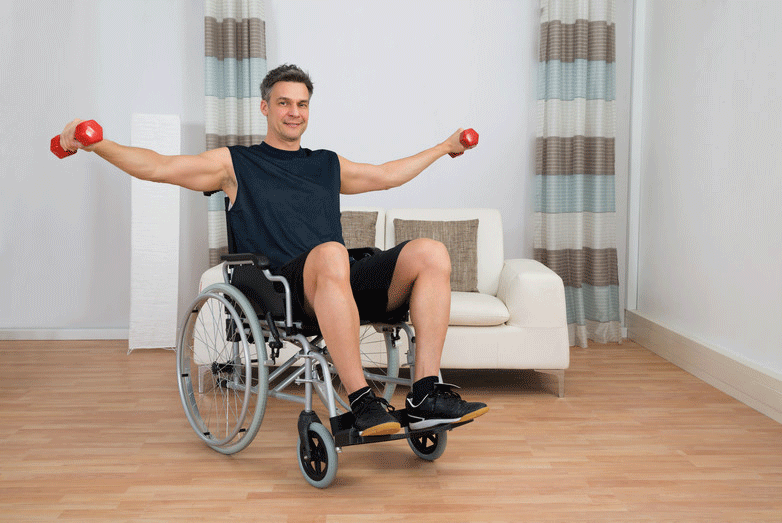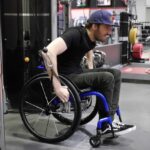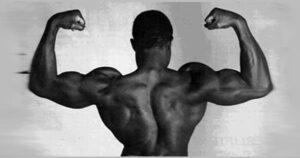Understanding the Importance of Cardio for Wheelchair Users
Cardio, or aerobic exercise, is any activity that gets your heart rate up and your blood pumping. It is an important part of a healthy lifestyle for everyone, but it is especially important for wheelchair users. Here are some of the benefits of cardio for wheelchair users:- Improved cardiovascular health. Cardio helps to strengthen the heart and lungs, which can reduce the risk of heart disease, stroke, and other chronic health conditions.
- Weight management. Cardio burns calories, which can help you to maintain a healthy weight or lose weight.
- Reduced pain and inflammation. Cardio can help to reduce pain and inflammation in the muscles and joints, which can be a common problem for wheelchair users.
- Improved mood. Cardio releases endorphins, which have mood-boosting effects. This can help to reduce stress, anxiety, and depression.
- Increased energy levels. Cardio can help to increase energy levels and improve overall stamina. This can make it easier to perform daily activities and participate in sports and other activities.
- Improved balance and coordination. Cardio can help to improve balance and coordination, which can be important for wheelchair users who are at risk of falls.
- Start slowly and gradually increase the intensity and duration of your workouts as you get fitter.
- Listen to your body and take breaks when you need them.
- Choose activities that you enjoy and that are safe for you to do.
- Talk to your doctor before starting any new exercise program.
How to Get Started with Wheelchair Cardio Exercises?
To get started with wheelchair cardio exercises, it’s important to consult with a healthcare professional or certified trainer. Begin with low-intensity exercises and gradually increase intensity as you improve. Don’t forget to warm up and cool down, choose a safe area, and consider using assistive devices for a more engaging workout.Top Wheelchair Cardio Exercises to Try at Home
- Incorporating Medicine Ball Bouncing
- Mastering Aeroplane Arms
- Trying Hand Cycle
- Executing Shoulder Press with Optional Weights

The Need for Stretching after Cardio Workout
Stretching after a wheelchair cardio workout is crucial. It helps prevent muscle soreness, enhances flexibility, and promotes proper muscle recovery. Additionally, it reduces the risk of injuries and improves blood circulation to relax the muscles. Incorporating yoga poses or gentle stretches targeting the entire body is beneficial for wheelchair users. Regular stretching after a cardio session maintains overall mobility and range of motion, supporting a healthy and active lifestyle.
Is Wheelchair Cardio only for Home?
No, wheelchair cardio is not only for home. There are many places where wheelchair users can get cardio exercise, including:
- Gyms: Many gyms have specialized equipment for wheelchair users, such as treadmills and rowing machines.
- Indoor pools: Swimming is a great low-impact cardio exercise for wheelchair users.
- Outdoors: Wheelchair users can also get cardio exercise by pushing their chairs on sidewalks, trails, or tracks.
- Specialized classes: There are many specialized classes for wheelchair users, such as wheelchair dance and wheelchair basketball.
If you are a wheelchair user and are looking for a way to get cardio exercise, there are many options available to you. You can find cardio exercises that you can do at home, at the gym, outdoors, or in a specialized class. The best way to find the right cardio exercise for you is to talk to your doctor or a physical therapist. They can help you create a safe and effective exercise program that meets your individual needs.
Here are some specific examples of wheelchair cardio exercises that can be done at home, in the gym, or outdoors:
- Pushing your wheelchair: This is a great way to get cardio exercise and improve your upper body strength. You can push your wheelchair on a treadmill, a track, or a sidewalk.
- Swimming: Swimming is a low-impact cardio exercise that is gentle on your joints. It is a great option for wheelchair users who have limited mobility.
- Rowing: Rowing is a great way to work your arms, back, and core. It is also a good cardio exercise. You can use a rowing machine that is adapted for wheelchair use.
- Hand cycling: Hand cycling is a great way to get cardio exercise and improve your upper body strength. You can use a hand cycle on a track or a trail.
- Wheelchair basketball: Wheelchair basketball is a great way to get cardio exercise and have fun. It is a team sport that is played by people of all ages and abilities.
No matter where you choose to do your cardio exercises, it is important to start slowly and gradually increase the intensity and duration of your workouts as you get more fit. It is also important to listen to your body and take breaks when you need them. With regular exercise, you can improve your cardiovascular health, strength, and overall fitness.
Let’s Sum Up
Regular cardio exercise is crucial for wheelchair users as it offers numerous health benefits. It improves cardiovascular fitness, strengthens muscles, enhances mood, and promotes overall well-being. Getting started with wheelchair cardio exercises is easy, and there are several effective options to choose from. Incorporating activities like medicine ball bouncing, aeroplane arms, hand cycling, and shoulder press can provide a challenging and rewarding workout.
It’s important to remember the importance of stretching after a cardio session to prevent muscle tightness and maintain flexibility. And while wheelchair cardio can be done at home, it’s also beneficial to explore outdoor options and join adaptive sports programs. To stay motivated, set achievable goals, track your progress, and find a workout buddy or support group.
Start prioritizing your cardiovascular health today and feel the positive impact on your overall well-being.





